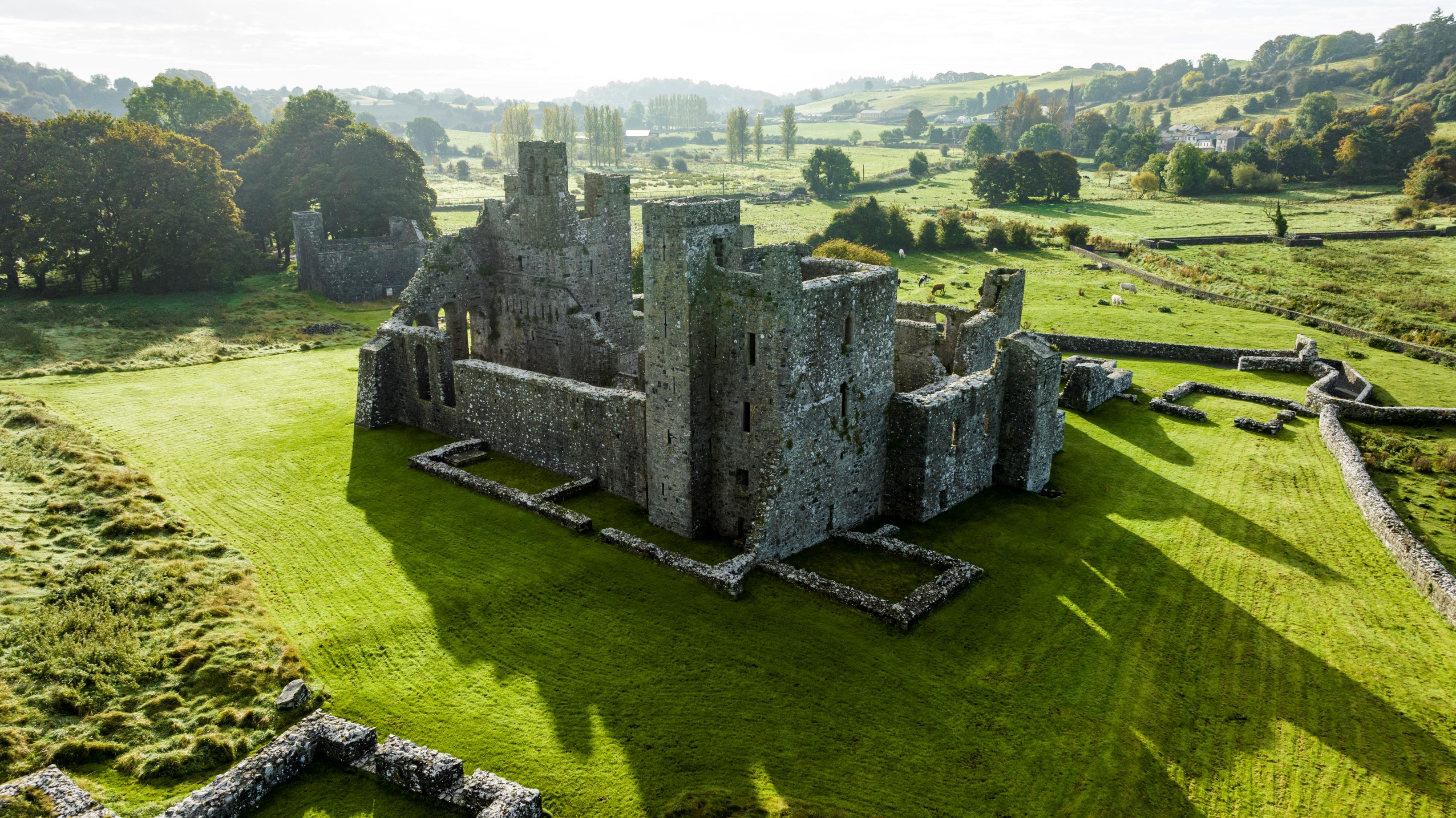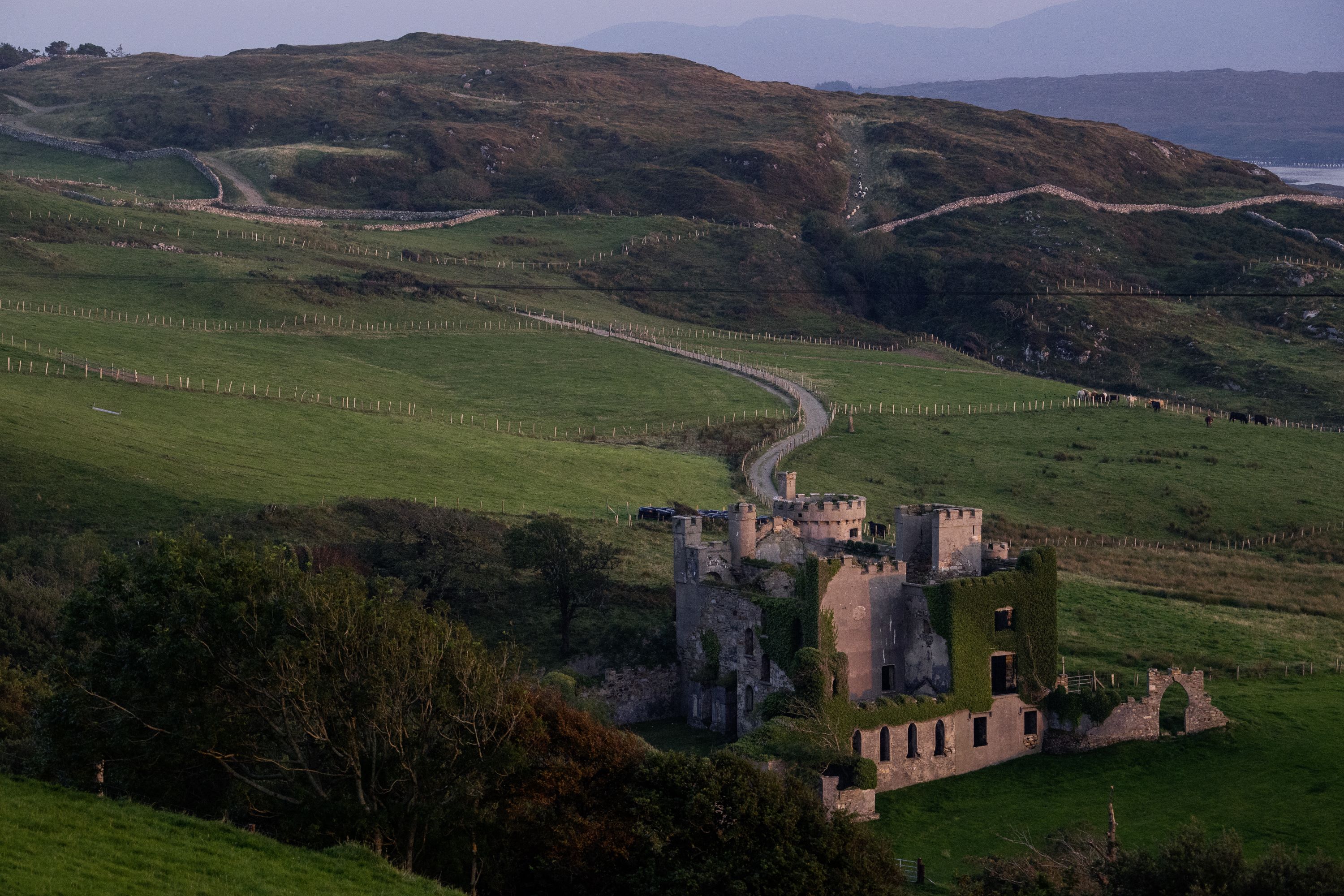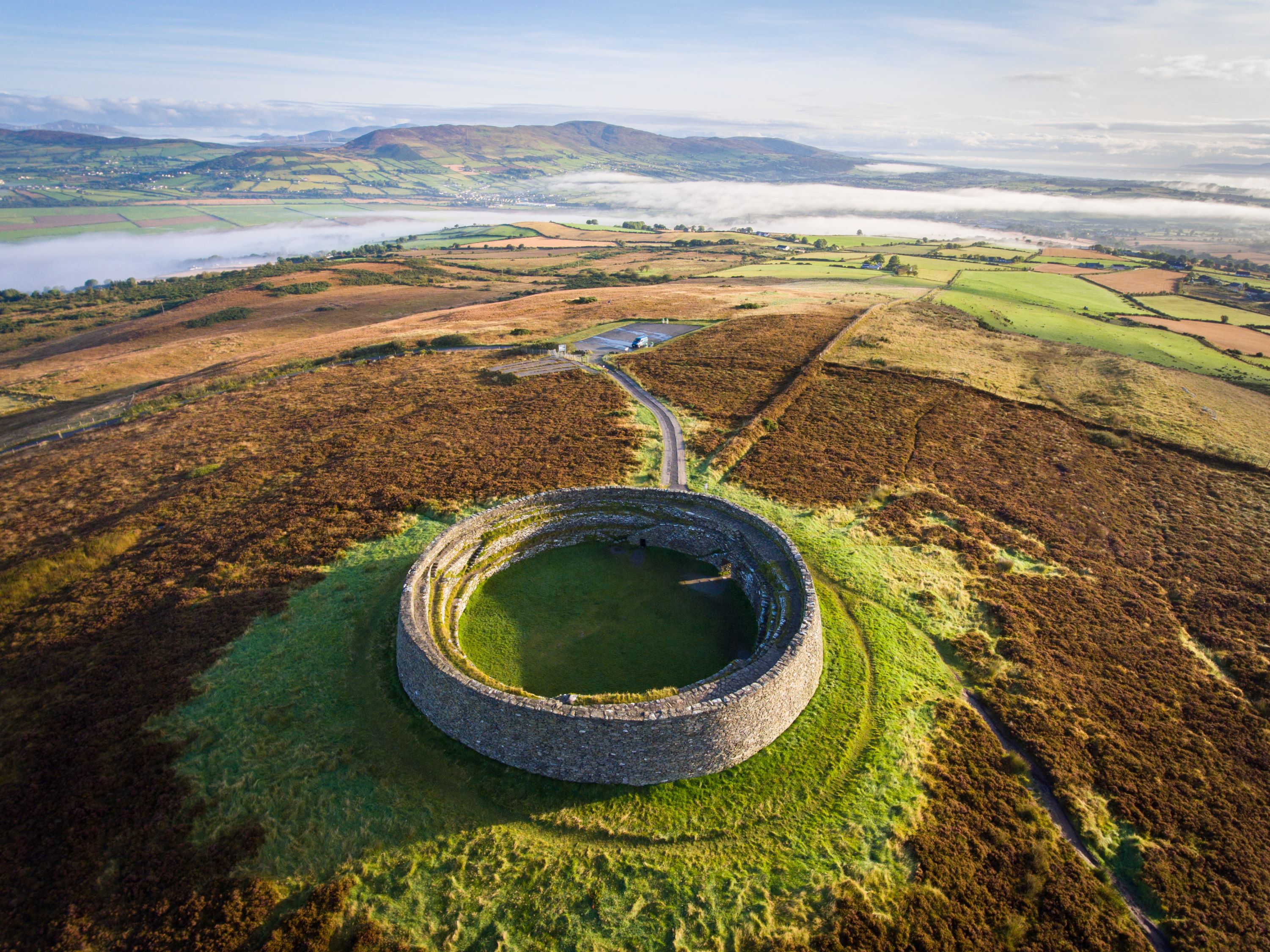A guide to Ireland’s forgotten castles and abbeys

Fore Abbey, Fore, Co. Westmeath
Thousands of years of history are etched into the landscape of Ireland and told through the castles, fortresses and monastic sites that greet the traveller around every bend. Some lie in ruins, others stand intact even after centuries, and all have a story to tell. Here are some of the lesser-known ones that are worth seeking out to explore.
Castles and fortresses
Tullynally Castle, County Westmeath
The family home of the Pakenhams, later Earls of Longford, for over 370 years, Tullynally Castle was first built as a plantation house and then remodelled as a castle in the early 1800s. Still a family home, the impressive castle is open to the public for guided tours of the historic great hall, dining room, drawing room and library as well as the Victorian servants’ quarters. The beautiful gardens complete the first-class experience.
Ross Castle, Killarney, County Kerry
Sitting on the edge of Lough Leane, one of the famous lakes of Killarney, Ross Castle is a dramatic site that conjures up tales of medieval battles. It was a stronghold of the Irish chieftain O’Donoghue Mór in the fifteenth century, and legend has it that he slumbers beneath the waters, rising every seven years on his white horse and granting good fortune to anyone who sees him. The interior of the castle can be visited on a guided tour.
The Rock of Dunamase, County Laois
Once a strategically important Anglo-Norman stronghold, Dunamase was part of the dowry of Aoife, daughter of Diarmuid Mac Murrough, King of Leinster, when she married the Norman conqueror Strongbow in 1170. It was destroyed during the Cromwellian invasion in 1650 but the ruins remain hugely atmospheric and also afford great views over the countryside.
McDermott's Castle, County Roscommon
Beginning as a twelfth-century fortification on tiny Castle Island in Lough Key, the building then became a tower house enabling the Mac Diarmada rulers to watch over the lough for potential enemies. In the nineteenth century it was remodelled as a castle and no longer used for defensive purposes. Sadly. a fire destroyed a large part of it in the twentieth century, but the ruins retain a magical aura when glimpsed from the shoreline.
One of the most fascinating things about Carlow Castle is not how it was built but how it was destroyed. The castle was built in the early thirteenth century to protect the river crossing. It stood until the early 1800s when a local physician tried to remodel it as an asylum. With an over-zealous use of explosives he demolished all but the west wall and towers which stand today on the river bank.
This three-storey tower house is typical of fourteenth- to fifteenth-century homes built by gentry on the island of Ireland. Originally owned by the Audley family, it was sold to Castle Ward in 1646 and remains part of the estate. The tower house overlooks Strangford Lough and has become known in recent years as a shoot location for Game of Thrones.
Along the scenic Sky Road in Connemara sit the ruins of Clifden Castle surrounded by lush green fields and overlooking Clifden Bay. Built in the Gothic Revival style in 1812, its estate originally covered over 17,000 acres. The castle changed hands many times over the years and fell into ruin in the late nineteenth century. The picturesque ivy-covered ruins can be reached on a short walk down a winding trail. The standing stones along the way are not prehistoric but were deliberately added.
Grianán of Aileach, Inishowen, County Donegal
Ireland’s ancient clans have left their mark on the landscape. Among the most impressive of their strongholds is Grianán of Aileach, a circular fortress sitting high on a hilltop on the Inishowen Peninsula with stunning views of the surrounding countryside. The fort dates back to the sixth or seventh century and is mentioned in Irish mythology and folklore. It was controversially restored in the nineteenth century.
Doonagore Castle, Doolin, County Clare
This rare sandstone castle is a sixteenth-century gem sited along the Wild Atlantic Way with great views over the ocean and the Aran Islands. It is a round tower house situated within in a walled enclosure and it played a significant role in the region’s history. Today it is owned by an American family who helped to restore it in the 1970s. While not open to the public, it is worth visiting for a perfect insta-worthy photo.
Cloughoughter Castle, County Cavan
Another island stronghold, thirteenth-century Cloughoughter Castle sits on a small island in Lough Oughter and is known as ‘the silent watchman’. Although no longer intact, much of its distinctive round keep still stands. The castle’s strategic position meant that it was seized and reseized many times during periods of conflict between Gaelic chieftains and the English Crown. Today a guided motorboat tour of the lough will take you close to it and reveal its history and legends.
Dunguaire Castle, County Galway
Sitting on the picturesque shores of Galway Bay, this impressive sixteenth-century tower house was restored in the early twentieth century and became a venue for meetings of the writers who led the movement to revive and promote Irish literature. Among them were W B Yeats, Lady Gregory and George Bernard Shaw. You can tour the castle to learn about its history or book the banquet experience with a four-course meal, wines and entertainment.
The triangular layout of this castle follows the shape of the rock on which it was built as an impenetrable guardian of the pass between the province of Ulster and the Anglo-Norman territory known as The Pale. It was built in 1236 by Lady Rohesia de Verdun, one of the most powerful women in Ireland in at the time, to defend her lands. The story goes that once the castle was complete, she pushed the builder out of a window to his death to preserve the castle’s secrets.
The medieval stronghold of the MacSweeneys for over 200 years, this imposing fifteenth-century fortress on the Wild Atlantic Way has a fascinating history. It gave shelter to survivors of the 1588 Spanish Armada fleet and repeatedly changed hands in the ongoing battle between the Irish and the English over centuries. The grounds are open year-round and a visit to the keep can be accommodated on request.
Charleville Castle, County Offaly
One of Ireland’s finest neo-Gothic castles, the imposing Charleville was built in 1798 but fell into disrepair in the twentieth century. Today a team of volunteers are working to restore and maintain the grand building. Guided tours are available and highlights include the grand oak staircase, the ballroom and the library. In the grounds, the King Oak, estimated to be between 400 and 800-years-old, is steeped in legend. The castle is also reported to be haunted.
Ballycarbery Castle, County Kerry
Little remains of this fifteenth-century castle near the town of Cahersiveen on the beautiful Ring of Kerry. Its ivy-covered ruins sit romantically on the landscape recalling a time when it dominated the surrounding area. Nearby is the dry-stone fort of Cahergal built around AD 600, which has been partly reconstructed and is an impressive site.

Clifden Castle, Sky Road, Co. Galway
Abbeys and monastic sites
Jerpoint Abbey, County Kilkenny
The King of Ossory founded Jerpoint Abbey in 1158 and the site offers a unique glimpse into the life of the Cistercian monks who once inhabited it. A guided tour will bring the site to life, delving into its history and explaining the meaning of the splendid carvings and sculptures. There is also a visitor centre with an exhibition.
The ruins of this small abbey on the bank of the Quoile River tell a tale or two. It was built by John de Courcy, an Anglo-Norman knight who arrived in Ireland in 1176 and conquered a considerable territory on the island. He built Inch in atonement for having destroyed the Erenagh Abbey nearby. The atmospheric ruins have appeared in Game of Thrones as the site of Robb Stark’s camp.
The remarkable round tower and high crosses at the sixth-century monastic site of Monasterboice are world famous. Muiredach's High Cross, which stands 5.5 metres high, is regarded as the finest high cross on the island of Ireland. It features biblical carvings of both the Old and New Testaments of the Bible. The tranquil site is a great place to discover Ireland’s early Christian heritage.
One of the best-preserved friaries of its kind in Ireland, fourteenth-century Quin Abbey incorporates parts of the castle that stood there before it, including some of its bastions, and the abbey’s grand cloister is more or less intact. There are stories of the monks hiding gold in the nearby river during penal times but no-one has succeeded in finding the sacred loot.
Fore Abbey, a seventh-century monastery once home to 300 monks, is known for its seven wonders. These include the monastery built on a bog; the mill without a race; the lintel stone raised by St Feichin’s prayers; the tree that won’t burn and the water that won’t boil. The abbey is now a ruin but its impressive remains are worth a visit.
This Cistercian monastery was founded in the twelfth century and despite suffering great damage during the Cromwellian occupation it remains a fascinating building. Highlights include its cloisters and many well-preserved stone carvings. A sixteenth/seventeenth-century gatehouse has been restored and turned into an interpretive centre, where you can learn about the abbey’s gripping history.

Grianán of Aileach, Co. Donegal
